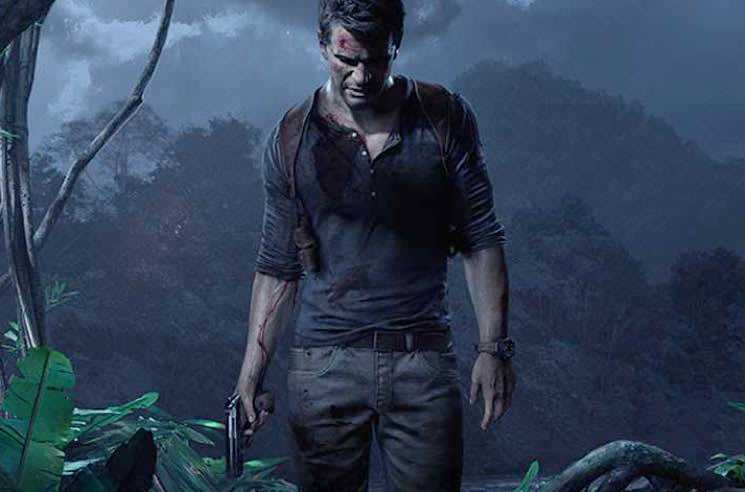In the fourth chapter of A Thief's End, Naughty Dog's final Uncharted adventure, our treasure-hunting hero Nathan Drake sits down on the couch with his wife Elena to eat some noodles, discuss their workday and then fire up the ol' PS1 to play… [spoiler alert!]
…Crash Bandicoot!
The breakout platformer for the original PlayStation that came out way back in 1996 was developed by none other than Naughty Dog. The sequence is a wonderful meta joke — made cleverer by the fact that they actually re-built a level that Nathan (i.e. you) gets to play.
But it's more than a nostalgic Easter egg for fans of the franchise. It also demonstrates how incredibly far the studio, and gaming, has come in the past 20 years in terms of photorealistic graphics, complex game design, narrative structure and character development.
That Crash chapter is about the latter, about taking a breather to spend time with Nathan and Elena, get a feel for their new lives in New Orleans and the depth of their relationship. When Nathan — who has stuck to the straight and narrow with salvage jobs since the third game, Drake's Deception — demurs about going to Malaysia for an illegal wreck dive, it's Elena who pushes him to do it.
Though I often think photorealism is oversold as a feature, it sure helps here that the motion-capture work is so on point that the intricate facial expressions nearly eliminate the uncanny valley effect. It impresses throughout, along with the rest of the high-end art direction that put this game near the pinnacle of all-time graphical greats, but especially when contrasted with the retro game and without the distraction of action.
The scene serves to recalibrate the game after the tragic, bullet-riddled, 15-year flashback with Nathan in a Latin American prison alongside his brother Sam, who was introduced with an even further flashback to their childhood spent exploring rooftops.
It also sets up the proper adventure to come once his long-lost sibling returns to drag Nate — and eventually Elena and mentor Sully — out on one last treasure hunt for Captain Henry Every's pirate booty to end all pirate booties.
The game consistently delivers the pulp adventure franchise's bread-and-butter. Since 2007, Uncharted has been all about third-person action-adventure gaming that mixes exploration, a gripping story and environmental puzzle-solving across incredibly complex levels with parkour and (yes, still a little too much) gunplay.
But the lesson of that fourth instantly iconic chapter is adhered to throughout. Unlike many of its blockbuster brethren, Uncharted 4 never loses sight of the importance of pacing to make the cinematic set-pieces truly pop, of using nostalgia to elicit emotion rather than cheap familiarity, and of developing characters so that we really do miss Nathan Drake and his motley crew when his thief's story finally reaches its end.
(Naughty Dog/SCEA)…Crash Bandicoot!
The breakout platformer for the original PlayStation that came out way back in 1996 was developed by none other than Naughty Dog. The sequence is a wonderful meta joke — made cleverer by the fact that they actually re-built a level that Nathan (i.e. you) gets to play.
But it's more than a nostalgic Easter egg for fans of the franchise. It also demonstrates how incredibly far the studio, and gaming, has come in the past 20 years in terms of photorealistic graphics, complex game design, narrative structure and character development.
That Crash chapter is about the latter, about taking a breather to spend time with Nathan and Elena, get a feel for their new lives in New Orleans and the depth of their relationship. When Nathan — who has stuck to the straight and narrow with salvage jobs since the third game, Drake's Deception — demurs about going to Malaysia for an illegal wreck dive, it's Elena who pushes him to do it.
Though I often think photorealism is oversold as a feature, it sure helps here that the motion-capture work is so on point that the intricate facial expressions nearly eliminate the uncanny valley effect. It impresses throughout, along with the rest of the high-end art direction that put this game near the pinnacle of all-time graphical greats, but especially when contrasted with the retro game and without the distraction of action.
The scene serves to recalibrate the game after the tragic, bullet-riddled, 15-year flashback with Nathan in a Latin American prison alongside his brother Sam, who was introduced with an even further flashback to their childhood spent exploring rooftops.
It also sets up the proper adventure to come once his long-lost sibling returns to drag Nate — and eventually Elena and mentor Sully — out on one last treasure hunt for Captain Henry Every's pirate booty to end all pirate booties.
The game consistently delivers the pulp adventure franchise's bread-and-butter. Since 2007, Uncharted has been all about third-person action-adventure gaming that mixes exploration, a gripping story and environmental puzzle-solving across incredibly complex levels with parkour and (yes, still a little too much) gunplay.
But the lesson of that fourth instantly iconic chapter is adhered to throughout. Unlike many of its blockbuster brethren, Uncharted 4 never loses sight of the importance of pacing to make the cinematic set-pieces truly pop, of using nostalgia to elicit emotion rather than cheap familiarity, and of developing characters so that we really do miss Nathan Drake and his motley crew when his thief's story finally reaches its end.
